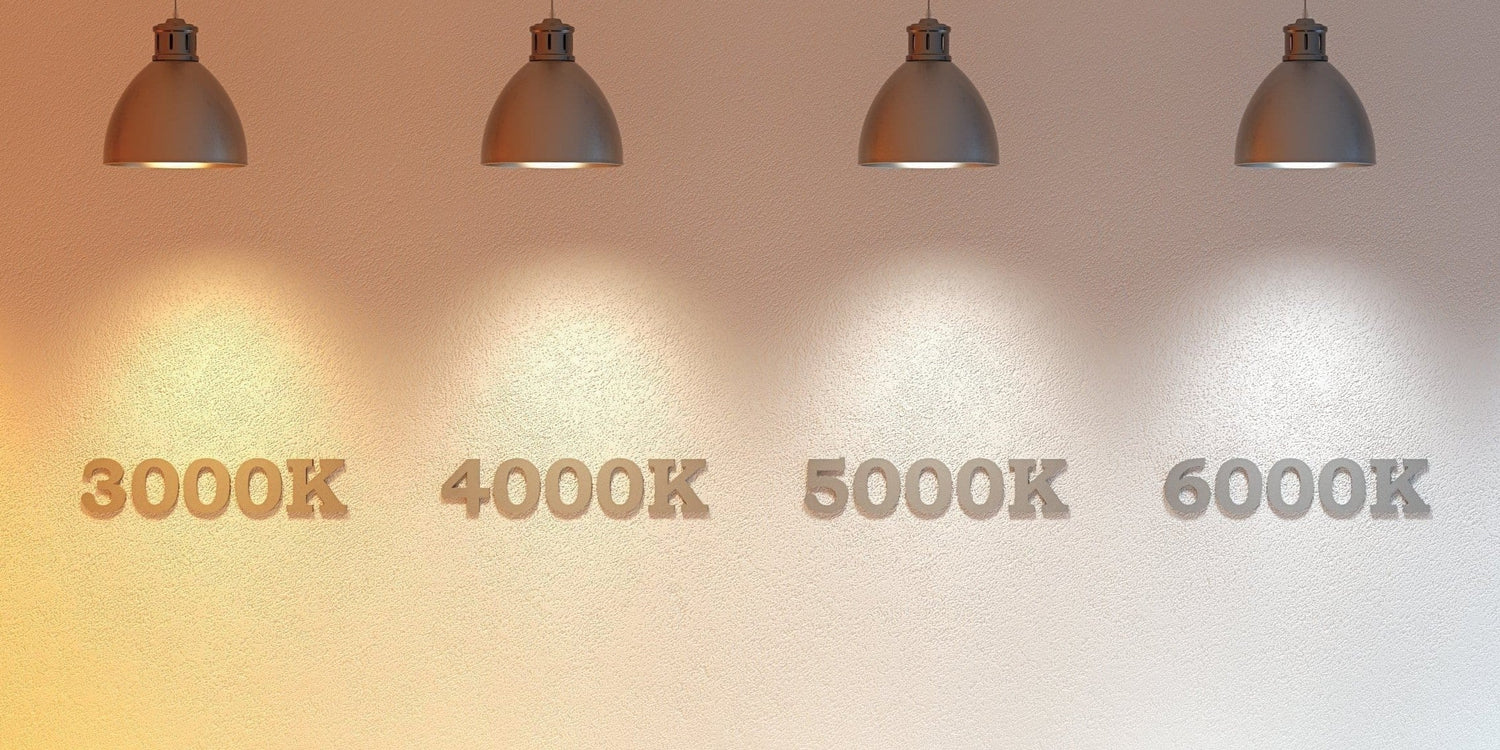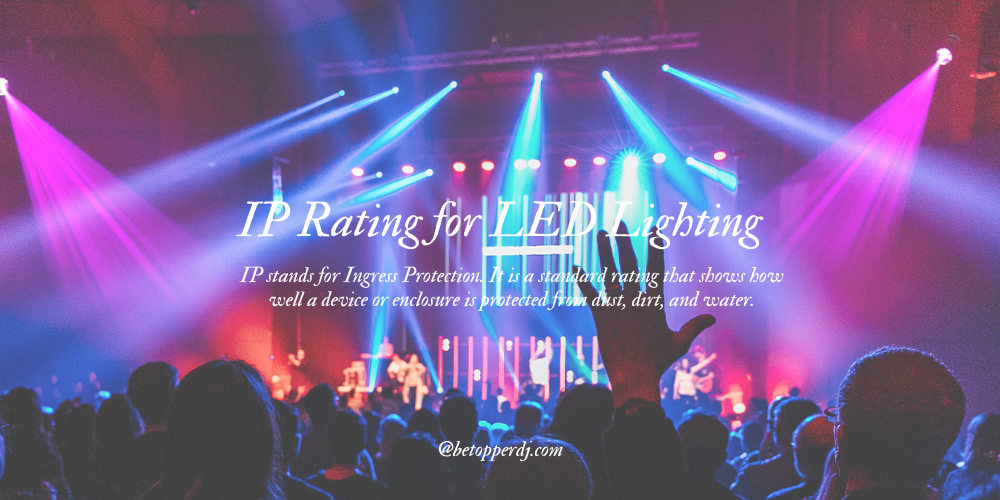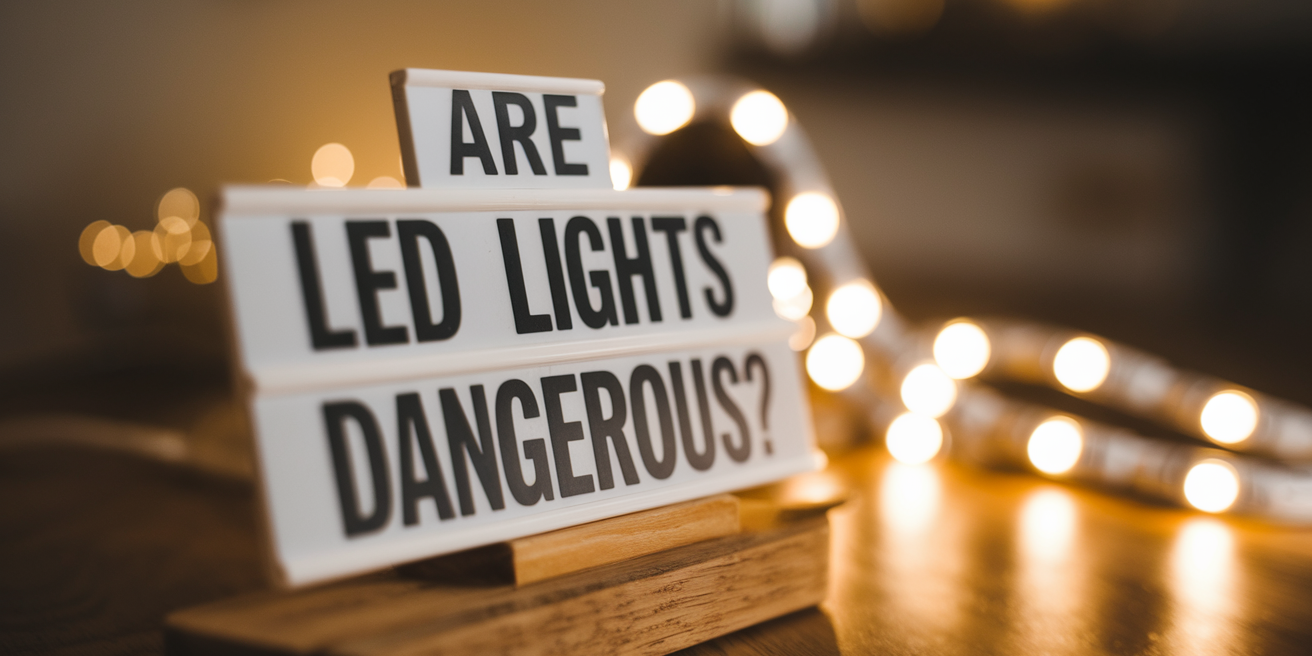El mes pasado, una iglesia en Chicago mejoró la iluminación de su escenario a 3000K y la asistencia aumentó un 20% porque los feligreses se sintieron más conectados. Mientras tanto, una sala de conciertos en Austin cambió de 4000K a 6000K para las noches de EDM y vio cómo las ventas de bebidas se disparaban un 15% gracias a la energía del público. Esta es la temperatura de color de la iluminación del escenario en acción.
Esto es lo que la mayoría de los locales se equivocan: usar una sola configuración Kelvin para todo. 3000K envuelve los escenarios en tonos cálidos y ámbar (ideal para coros o noches de jazz), mientras que el brillo gélido de 6000K funciona para DJs, pero destruye el ambiente acogedor. Aprendí esto a las malas cuando un cliente de teatro usó 6000K para Hamlet: los actores parecían fantasmales y los críticos lo llamaron "un drama médico".
Sigue leyendo para que puedas evitar los errores que cometen los diseñadores de iluminación.
¿Qué es la temperatura de color de la iluminación del escenario?
Iluminación del escenario La temperatura de color se mide en Kelvin (K), una escala que indica si la luz se ve cálida (dorada) o fría (azulada). Piénselo como ajustar un regulador de intensidad: números más bajos (e.g., 3000K) crean un resplandor acogedor de fogata, mientras que los números más altos (e.g., 6000K) imitan el brillo nítido de un cielo de mediodía sin nubes.
¿Por qué es importante la temperatura del color?
La escala Kelvin en iluminación no es solo un detalle técnico, sino una herramienta para contar historias. Los tonos más cálidos (Kelvin más bajos) transportan al público a momentos emotivos, mientras que los tonos más fríos (Kelvin más altos) aumentan la energía. Aquí te explicamos cómo adaptar tu iluminación al estado de ánimo de tu público:
3000K – Luz cálida para momentos íntimos
3000K envuelve los escenarios en tonos ámbar, como la luz del sol filtrándose entre las hojas de otoño. Esta calidez invita al público a acercarse, ideal para diálogos tranquilos o actuaciones solistas donde la conexión es fundamental. Úselo para la escena del balcón de Romeo y Julieta, no para un espectáculo de láser.
Ejemplo de uso: obras románticas, decorados acústicos o escenas a la luz de las velas.
4000K – Luz neutra para mayor claridad y enfoque
Los 4000K funcionan como un foco sin deslumbrar. Es lo suficientemente brillante como para resaltar la mirada de un comediante o la destreza de un chef con el cuchillo, pero mantiene un ambiente relajado. Piensa en un estudio de televisión diurno: acogedor, accesible, pero nunca somnoliento.
Ejemplo de uso: comedia stand-up, charlas TED o demostraciones de cocina.
6000K – Luz fría para un impacto de alta energía
6000K pega como un espresso doble. Su brillante tono azul blanquecino agudiza cada detalle, haciendo que los estrobos resalten y las tomas del público parezcan cinematográficas. Perfecto para los drops de EDM o la pirotecnia del entretiempo, pero evítalo para los cuentos antes de dormir: arruinará el ambiente acogedor.
Ejemplo de uso: festivales de EDM, intros deportivas o escenas de ciencia ficción futuristas.
3000K vs. 4000K vs. 6000K: Diferencias clave
Elegir entre 3000K, 4000K y 6000K para la iluminación del escenario no se trata solo de brillo, sino también de controlar el estado de ánimo, la concentración y la energía. Así es como se comparan estas temperaturas de color para presentaciones en vivo:

Iluminación de escenario cálida de 3000 K
Ventajas:
- Crea intimidad: imita la luz de las velas o el atardecer, ideal para escenas emotivas en obras como Un tranvía llamado deseo.
- Reduce la fatiga visual: el brillo suave mantiene al público relajado durante actuaciones largas (e.g., servicios religiosos o sets acústicos).
- Oculta imperfecciones: disminuye las arrugas en los rostros de los actores o las texturas desiguales del set.
Contras:
- Mala visibilidad de los detalles: no resalta los accesorios intrincados (e.g., cartas escritas a mano o joyas en dramas de época).
- Colores apagados: los azules y verdes profundos lucen turbios bajo una luz cálida.
Ideal para:
- Dramas teatrales, conciertos clásicos, servicios religiosos.
- Evitar para: comedia stand-up (el público no puede ver las expresiones de los comediantes) o batallas de baile (carece de energía).
Iluminación de escenario blanca neutra de 4000 K
Ventajas:
- Tono equilibrado: se asemeja a la luz natural del mediodía: brillante pero no clínico.
- Multiusos: funciona para presentaciones corporativas, ensayos de teatro y podcasts en vivo.
- Reproducción de color precisa: mantiene los fondos de marca (logotipos, exhibiciones de productos) fieles a la realidad.
Contras:
- Ambiente aburrido: carece de la calidez de 3000K o la emoción de 6000K.
- No especializado: Tiene dificultades en espacios que necesitan calidez o energía extrema.
Ideal para:
- Eventos híbridos (e.g., un teatro que alberga tanto obras de teatro como mesas redondas).
- Evitarlo para: fiestas rave con mucha energía (parece una iluminación de oficina) o cenas románticas en el escenario (demasiado estériles).
Iluminación de escenario blanca fría de 6000 K
Ventajas:
- Aumenta la energía: la luz azul blanquecina y nítida se siente como una dosis de cafeína, ideal para los lanzamientos de EDM o los espectáculos de entretiempo.
- Mejora la tecnología: hace que las pantallas LED, los hologramas y los disfraces metálicos resalten.
- Listo para exteriores: corta la luz del día en festivales o eventos en estadios.
Contras:
- Duro para la piel: aclara las pieles pálidas (evítalo en cantantes solistas).
- Sobreestimulante: puede abrumar al público en lugares pequeños y cerrados.
Ideal para:
- Conciertos (rock, pop, electrónica), torneos de esports, lanzamientos de productos llamativos.
- Evitar: recitales de poesía (se siente confrontativo) o musicales con temática vintage (mata las vibras retro).
Tabla de comparación rápida:
| Característica | 3000K | 4000K | 6000K |
| Ánimo | Acogedor, íntimo | Neutral, centrado | Enérgico, intenso |
| Los mejores lugares | Teatros, iglesias | Salas de conferencias | Estadios, clubes |
| Compatibilidad tecnológica | Pobre con LED | Bueno con proyectores | Perfecto para LED |
| Ambiente de la audiencia | Relajado | Alerta | Bombeado |
Consejos: ¡Mezcla las temperaturas! Usa 3000 K para socializar antes del espectáculo y luego sube a 6000 K cuando el artista principal suba al escenario.
3000K vs. 4000K vs. 6000K para presentaciones en vivo
Elegir la temperatura de color adecuada se trata menos de las especificaciones técnicas y más del control de multitudes. Aquí te explicamos cómo lograrla en dos lugares cruciales:
Para la iluminación de la iglesia
Las iglesias necesitan una iluminación que transmita una sensación de santidad, pero a la vez funcional. La iluminación de 3000 K envuelve el espacio en tonos cálidos y ámbar, perfectos para sermones o oraciones a la luz de las velas; es como un terciopelo visual. Pero cuando el coro canta o los niños actúan, cambia a 4000 K. Este blanco neutro permite leer las partituras y ver los rostros sin arruinar el ambiente reverente.
La mayoría de las iglesias dividen la diferencia: 3000K para momentos tranquilos, 4000K para eventos concurridos. Simplemente evite los 6000K, ya que convierte una vidriera en un letrero de neón.
Tope de botella LPC010-B:Luz PAR profesional de alto CRI para iluminación de iglesias
Cuando se trata de Iluminación de la iglesia: lograr la temperatura de color adecuada es crucial para crear una atmósfera cálida y acogedora.La Betopper LPC010-B es una luz PAR con alto IRC, diseñada para ofrecer un brillo y una precisión de color excepcionales, lo que la convierte en la opción perfecta para presentaciones en vivo, servicios religiosos y producciones teatrales. Con un IRC ≥90, garantiza colores naturales y realistas, mejorando la experiencia visual tanto para el público presencial como para quienes realizan transmisiones en vivo.
Características principales:
✅Precio original: 129,00 USD – Consulta las ventas flash y asegúrate de obtener el mejor precio.
✅54 LED de 4 W – Ofrece una potente salida de 5562 lúmenes para una iluminación brillante y uniforme.
✅IRC alto (≥90) – Proporciona una reproducción del color precisa, esencial para la iluminación profesional en iglesias.
✅Puerta de granero ajustable – Permite un control preciso de la luz para enfocar o suavizar el haz según sea necesario.
✅Opción blanco cálido 3000K – Ideal para crear un ambiente de culto íntimo y acogedor.
✅Construcción duradera y profesional – Diseñado para un rendimiento duradero en escenarios y entornos de iglesias.
Con su alta precisión de color, control de haz ajustable y brillo de calidad profesional, el Betopper LPC010-B garantiza una iluminación impecable. iluminación de la iglesia para una experiencia de adoración inspiradora e inmersiva.
Para iluminación de conciertos
Los conciertos prosperan gracias a la energía, pero los géneros exigen reglas diferentes:
- DJs/EDM: Sube a 6000K para crear esa atmósfera gélida y futurista. Se sincroniza con luces estroboscópicas y paredes LED, haciendo que cada ritmo se sienta real.
- Bandas en vivo: Quédate con 4000K. Es lo suficientemente brillante como para destacar los solos, pero evita que los vocalistas parezcan fantasmales.
Para noches de géneros mixtos, comience con 4000K para los teloneros y suba a 6000K cuando toque el cabeza de cartel. El público no notará el cambio, solo sentirá el aumento de energía.
Betopper LM1915R: Luz de cabeza móvil dinámica para iluminación de conciertos
Iluminación de conciertos exige potencia, versatilidad y efectos de color vibrantes, y el Betopper LM1915R Cumple con creces. Equipada con 19 LED RGBW de 15 W, esta luz de cabeza móvil ofrece un brillo impresionante y una rica mezcla de colores, perfecta para actuaciones vibrantes.
Su exclusivo efecto de tira de luz añade un impacto visual adicional, realzando la atmósfera del escenario. Ya sea que necesite tonos cálidos de 3000 K para momentos íntimos o una iluminación fría de 6000 K para actuaciones electrizantes, el LM1915R se adapta a la perfección, convirtiéndolo en un accesorio esencial para cualquier concierto.
Características principales:
✅Precio original: 279,00 USD – Consulta las ventas flash y asegúrate de obtener el mejor precio.
✅19 LED RGBW de 15 W – Ofrece un brillo intenso y una mezcla de colores suave.
✅Efecto de tira de luz – Crea un impacto visual adicional para una experiencia de concierto más inmersiva.
✅Zoom motorizado – Ángulo de haz ajustable tanto para lavados amplios como para haces estrechos.
✅Temperaturas de color versátiles – Admite diferentes configuraciones de temperatura de color para adaptarse a cualquier estado de ánimo.
✅Control DMX y activación por sonido – Se sincroniza perfectamente con la música para lograr efectos dinámicos.
✅Diseño duradero y profesional – Diseñado para giras y presentaciones en vivo.
Con su potente salida, opciones flexibles de temperatura de color y efectos visuales únicos, el Betopper LM1915r es imprescindible para crear una iluminación de conciertos inolvidable.
Factores que influyen en la selección de la temperatura de color de la iluminación del escenario
Elegir la temperatura de color de tu escenario no es solo escoger un número: es resolver un rompecabezas donde la tecnología se encuentra con el arte.
Analicemos las dos piezas más grandes:
Factores técnicos: Lúmenes vs. Kelvin en luces LED de escenario
Piense en los lúmenes como el volumen de su luz y en los Kelvin como su acento.
- Lúmenes (brillo):
Más lúmenes = luz más brillante. Un efecto de lavado de 20 000 lúmenes garantiza que incluso un fan de la última fila vea las baquetas del baterista. ¿Pero tantos lúmenes con 3000 K? Es como encender una fogata: demasiado brillante, pero aún cálido. - Kelvin (tono de color):
Kelvin bajo = acogedor, Kelvin alto = nítido. Combine 6000 K con 15 000 lúmenes para una brillante a la luz del día concierto.
La solución: Equilibrar ambos. ¿Necesitas un escenario de iglesia luminoso pero cálido? Prueba 3000 K con 18 000 lúmenes. ¿Quieres energía sin deslumbrar en una discoteca? 6000 K con 12 000 lúmenes atraviesa las máquinas de humo.
Leer más: Candelas vs. Lúmenes: Descifrando las métricas de la luz
Luces de escenario cálidas vs. frías
Tu iluminación debe ser acorde al evento. Pregunta:
1. ¿Cuál es la vibra?
Tu iluminación define el tono emocional. Para eventos íntimos y acogedores, como lecturas de poesía o sets acústicos, 3000K envuelve el escenario en un cálido abrazo dorado. Cuando la energía se dispara, como en los lanzamientos de EDM o las intros de equipos deportivos, la luz nítida y brillante de 6000K se adapta a la adrenalina del público. Los eventos mixtos, como obras de teatro con pausas de baile repentinas, prosperan con 4000K: una luz lo suficientemente neutra como para pasar del drama a la música disco sin cambios bruscos.
2. ¿Qué tan grande es la multitud?
Los recintos pequeños (de menos de 100 asientos) se basan en 3000K para mantener la intimidad, como compartir secretos alrededor de una fogata. Pero en estadios o festivales al aire libre, 6000K rompe el caos, asegurando que incluso los aficionados de la última fila sientan la energía ultrarrápida.
3. ¿Qué hay en el fondo?
Los escenarios oscuros y melancólicos (bosques, noches estrelladas) se intensifican con el brillo ámbar de 3000 K, añadiendo capas a las sombras. Para escenarios con paredes LED o arte neón, el tono frío de 6000 K evita los contrastes, sin competir con los gráficos azul eléctrico ni la señalización rosa intenso.
Consejos: Pruebe durante la prueba de sonido. 3000K puede lucir perfecto solo, pero desentona con una cortina roja.
Mitos comunes sobre la temperatura de color de la iluminación escénica
Vamos a desmentir dos mitos persistentes que hacen tropezar incluso a los más jóvenes. iluminación profesional diseñadores:
Mito 1: “Más Kelvin = Mejor visibilidad”
Muchos asumen que la luz brillante y fría de 6000K garantiza claridad. No es cierto. En un festival de teatro reciente, una producción de Macbeth usó 6000K: el sudor de los actores brillaba, pero sus capas carmesí parecían grises. Cambiar a 4000K restauró el dramatismo rojo sangre, manteniendo los rostros nítidos. Los altos grados Kelvin sobreexponen los colores oscuros y fatigan la vista durante las funciones largas. Para una visibilidad sin deslumbramiento, 4000K suele ser la mejor opción; por eso las charlas TED y las demostraciones de cocina lo recomiendan.
Mito 2: “La luz cálida no es adecuada para escenarios modernos”
La luz de 3000K se considera "anticuada", pero la he visto impactar en conferencias tecnológicas. En un importante lanzamiento de smartphones, se usaron 3000K para destacar los productos contra paredes negras: el brillo dorado hacía que los dispositivos elegantes se sintieran accesibles, no estériles. La luz cálida también evita que los escenarios con muchos LED parezcan una película de ciencia ficción.
Los Premios Vega 2023 (un festival de música indie de moda) combinaron 3000K con hologramas. ¿El resultado? La calidez retro se fusionó con la tecnología futurista sin desentonar.
Cómo mezclar temperaturas de color en el diseño de escenarios
Mezclar temperaturas de color es como pintar con luz: se superponen tonos para contar historias más profundas.Esta es la forma más sencilla de empezar:
Frente cálido, espalda fresca
Coloca luces de 3000K al frente del escenario para envolver a los artistas en una luz cálida y acogedora. Luego, baña el fondo con un blanco frío de 6000K. Esta combinación hace que los cantantes destaquen sobre un fondo nítido y enérgico. En un concierto de rock en el que trabajé, la vocalista principal estaba bajo focos de 3000K (lo que la hacía sentir cercana) mientras la batería, iluminada con neón, brillaba a 6000K detrás de ella. El público se sintió atraído por la música sin perderse en el caos visual.
Los LED son tus mejores amigos
Moderno Luces LED de escenario Permite ajustar la temperatura de color durante el espectáculo. Usa una guía de temperatura de iluminación LED para escenarios para programar ajustes preestablecidos: quizás 4000 K para el monólogo inicial de un comediante, y 3000 K cuando comparta una historia conmovedora. Sin necesidad de cambiar de luminaria, solo pulsa un botón.
Consejo profesional: Pruebe las mezclas durante los ensayos generales. Lo que se ve intenso en el papel podría perder intensidad bajo cortinas rojas o máquinas de humo.
Conclusión
La temperatura de color que elijas para la iluminación de tu escenario influye en cómo se siente tu público, no solo en lo que ve. Convierte un buen espectáculo en una experiencia inolvidable.
Apéguese a estos conceptos básicos:
- 3000K envuelve los escenarios en calidez para sets acústicos o momentos de tranquilidad.
- 4000K se encarga de casi cualquier cosa: conversaciones de oficina, conciertos de jazz u obras de teatro escolares.
- 6000K enciende multitudes en conciertos de rock o noches de DJ.
Si te equivocas, las luces te darán la lata. ¿Un brillo cálido en una fiesta rave? Fans soñolientos. ¿Luces frías en una boda? Deslumbramientos incómodos.
Juega con tus luces. Empieza con 3000K para charlar antes del espectáculo y luego sube a 6000K al máximo cuando empiece el espectáculo principal. A tu público no le importará la tecnología; simplemente sentirán la atmósfera que creaste.
Preguntas frecuentes
¿Es mejor 4000K o 6000K para presentaciones en vivo?
4000K funciona mejor para bandas en vivo que necesitan claridad facial (rock, jazz), mientras que 6000K es adecuado para actos de alta energía (EDM, pop) donde las imágenes audaces son lo más importante.
¿Es 6000K demasiado duro para etapas pequeñas?
¡Sí! 6000K puede resultar abrumador en espacios reducidos como cafeterías o teatros pequeños. Mantén una temperatura de 3000K a 4000K para mantener un ambiente acogedor sin deslumbrar a la audiencia.





Dejar un comentario
Todos los comentarios se revisan antes de su publicación.
Este sitio está protegido por hCaptcha y se aplican la Política de privacidad de hCaptcha y los Términos del servicio.